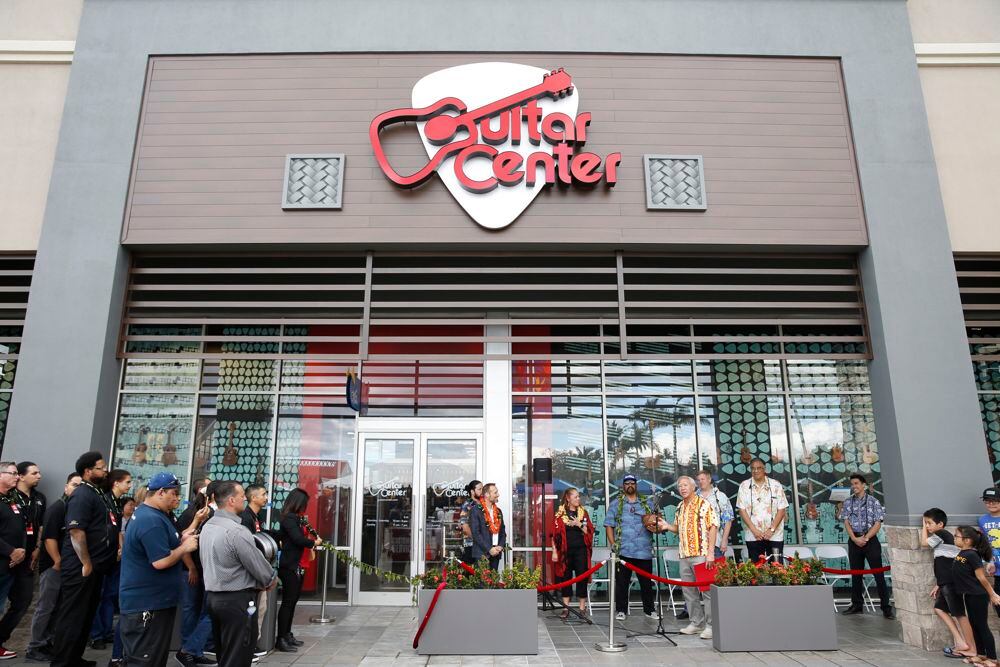The long list of retailers to file for bankruptcy in 2020 can read like the biggest road-side mall sign in America: J.Crew, Guitar Center, JCPenney, Men's Wearhouse, Century 21 — all recognizable brand-names, all cornerstones of the retail landscape from suburban shopping malls and factory outlets to downtown shopping districts.
Despite the feeling that a retail apocalypse is underway, however, bankruptcy is not the end for many of these long-standing companies. Many are using the process to reorganize their business and growth plans for the future, shedding debt and often real estate along the way.
"For many of these companies, they'll presumably emerge from the bankruptcy process leaner and more capable of achieving growth and profitability," said Dan Guyder, partner at the law firm Allen & Overy, who has two decades of experience in bankruptcy law.
Guitar Center, for instance, exited Chapter 11 bankruptcy protection on December 22, just a month after first announcing its filing.
The country’s largest retailer of musical instruments had struggled to compete in recent years with online competitors, and in the process stacked up $1.3 billion in debt. When COVID came along earlier this year, it was already in a rough position.

But as far as bankruptcy proceedings go, it seems to have been relatively smooth-going for the retailer. While the process can often take several months, Guitar Center's bankruptcy began with a clear plan for an exit. When the company announced the filing in November, it had already worked out a basic plan with its creditors to reduce its debt by $800 million.
"Many of these companies are able to come into a Chapter 11 process with a restructuring plan already in hand that's been largely agreed upon by many of their major creditors," Guyder said.
"Now, not every company will be so fortunate to negotiate that kind of proposal prior to going into bankruptcy, so some of them may take a little bit longer to go through the process."
What exactly the other side of bankruptcy looks like, however, is still being worked out.
One area for potential change is Guitar Center's nearly 300 retail locations and another 225 locations under sister brand Music & Arts, which specializes in band instruments. Indeed, the company hired A&G Realty Partners to "optimize its real estate portfolio," according to a release. Though it hasn't announced yet if it will close locations, the possibility looms.
“We are excited to have gained the financial and operational flexibility we need to reinvest in our business and support our long-term sustainable growth, allowing us to deliver on our mission of putting more music into the world,” said Ron Japinga, CEO of Guitar Center, in a statement. “We look forward to strengthening our business and to building upon this momentum as we enter this next exciting chapter.”
Another company that moved through the bankruptcy process quickly is Men's Wearhouse and Jos. A. Bank parent Tailored Brands, which filed for Chapter 11 bankruptcy in August and emerged earlier this month with $686 million less debt and promises to adapt to a new retail environment.
"Be assured that, while addressing our underlying financial challenges precipitated by the unprecedented impact of COVID-19, we continued to strengthen our business and brands with efforts focused on expanding our omnichannel capabilities to provide even greater convenience for our customers, curating our merchandise assortments to align with today’s needs and trends, and launching exciting new partnerships that appeal to existing and new customers,” Tailored Brands president and CEO Dinesh Lathi said in a press release.
Previously Tailored Brands had announced plans to cut its corporate workforce by 20 percent and shut down up to 500 stores.

Both of these cases are contrasted by companies such as Pier 1 Imports and Stage Stores, which were forced into liquidation after failing to find buyers.
For those brands that have survived, bankruptcy protection offered them leverage with their landlords as they looked ahead to "right-size" their retail footprint, Guyder said.
"Either the threat of bankruptcy or an actual bankruptcy becomes the cudgel to negotiate with landlords and find a way to resize the company's location footprint in order to match their expectations in terms of the business plan and the growth plan."
Guyder added that he anticipates Chapter 11 bankruptcy, specifically, will continue to be an important tool for struggling retailers going into 2021 as government supports, such as eviction and foreclosure moratoriums, lift and put additional pressure on consumers and leaseholders alike.
"I don't think we're at a point where we should call the time of death for the retail sector," he said. "There's certainly some fundamental changes afoot, and you can see that inside and outside of bankruptcy, retailers are responding to that."



